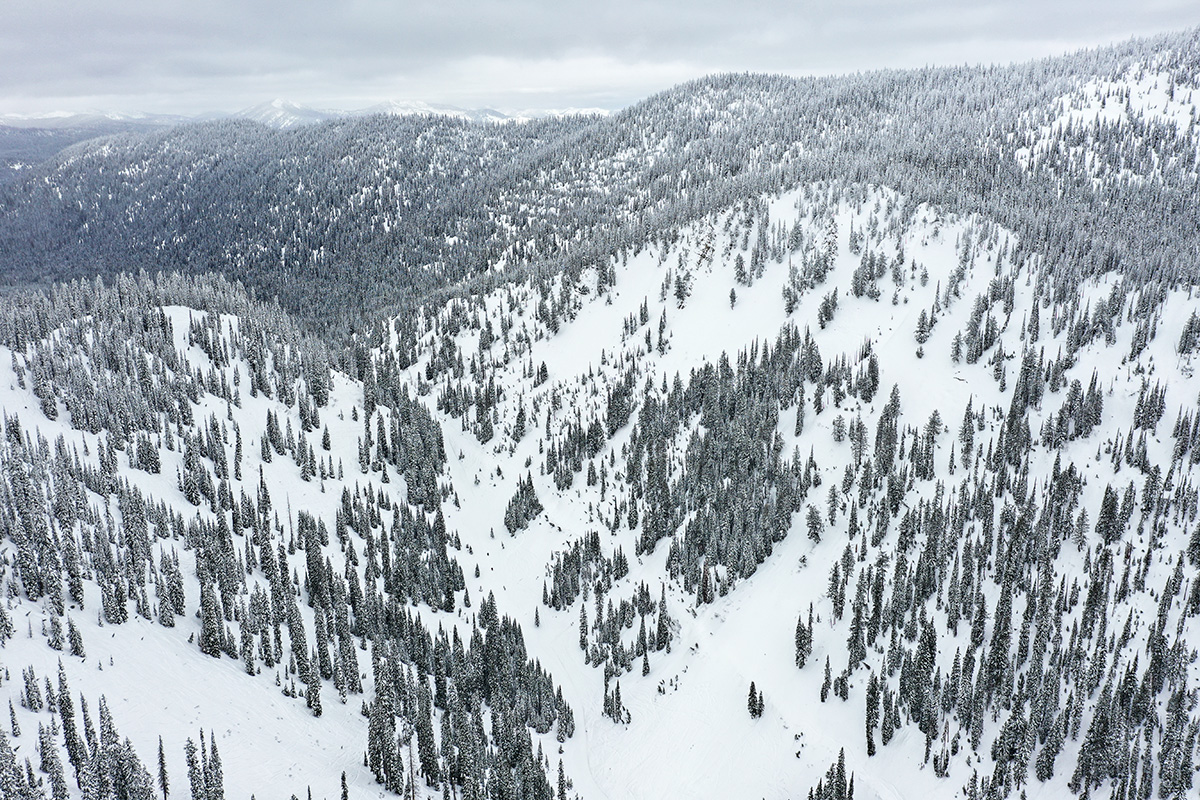Flathead Avalanche Workshop Returns to Whitefish
The 13th annual Northern Rockies Snow and Avalanche Workshop brings in a slew of experts for a public presentation at the Whitefish Performing Arts Center on Nov. 11
By Maggie Dresser
While October snow triggered early season stoke in the Flathead Valley, avalanche experts and educators have been busy preparing for the 13th annual Northern Rockies Snow and Avalanche Workshop (NRSAW), a one-day event that will take place at the Whitefish Performing Arts Center on Nov. 11.
Presented by the Flathead Avalanche Center (FAC) and its nonprofit arm, Friends of the Flathead Avalanche Center (FOFAC), the workshop will feature a slate of six speakers, including avalanche forecasters, snow science researchers, a journalist and a nature therapy guide.
FAC forecaster Cam Johnson will present the research he and Director Blase Reardon gathered that explains the spike in late season near-misses and accidents and how April recently became the second highest tally of incidents in the region behind February.
In his talk, “April Fooled in the Flathead,” Johnson will present weather and snowpack data and the human conditions that lead to avalanche incidents that occurred in early April in 2020 and 2023. The presentation will also include practices to mitigate late-season avalanche risks.
“Cam’s talk is about a series of accidents and near-misses that we’ve had in the last four years that all occurred in the first or second week of April that involve particularly antecedent conditions and weak layers,” Reardon said.
In the last five years, forecasters have noticed an uptick in near-misses and accidents, prompting FAC forecasters to study the recent trend.
“I think any time I see something that looks like it might be a pattern among accidents, I want to see if I can verify the pattern and understand the characteristics,” Reardon said. “It helps alert people when those conditions are developing, and it helps to give people travel advice.”
Traveling from the Southern Rocky Mountains, Colorado Avalanche Information Center senior forecaster Jason Konigsberg will share his research about the relationship between triggering “whumpfs,” which are indicators of unstable snowpack conditions, and their correlation as potential warning signs.
To supplement the science-driven presentations, journalist Devon O’Neil, a correspondent for Outside Magazine and an avid ski tourer based in Breckenridge, Colorado, will highlight the importance of storytelling and its impact. He’s currently writing a book about a mysterious backcountry accident that haunted a small Rocky Mountain town and his essay, “I Reported on Avalanches for 15 Years. Then I Triggered a Huge One,” illustrates the power of storytelling.
Other speakers include Nata de Leeuw, a Montana State University graduate student who will present her research about the comparison between wind slabs and storm slabs; Lindsey Rochte, who will discuss a framework for mapping and slope shading; and Christiane Hinterman-Prew, who will lead a “body” session focused on nature therapy to kick off the workshop.
NRSAW will run from 10 a.m. to 5 p.m. at the Whitefish Performing Arts Center with a raffle closing out the event. Great Northern Bar will host an afterparty beginning at 7 p.m. For tickets, visit https://flatheadavalanche.org/nrsaw.
As snow continues to fall intermittingly in the mountains, the FAC has begun issuing bi-weekly avalanche forecasts, with the most recent Nov. 7 advisory describing “warm tropical moisture.”
According to the forecast, freezing levels have been as high as 7,000 feet with rain decimating the early season snowpack below 6,500 feet. Snow depths range between 3 and 15 inches at weather stations above 6,000 feet.
Forecasts will be updated every Tuesday and Friday until Dec. 5 when daily forecasts begin.